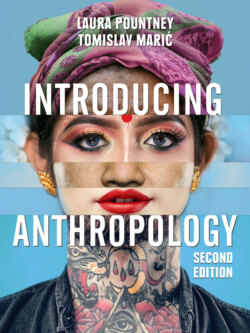Читать книгу Introducing Anthropology - Laura Pountney - Страница 32
Sexual dimorphism
ОглавлениеSexual dimorphism refers to both the internal and the external differences between males and females found in a variety of animals and plants. The earliest fossil evidence to show sexual dimorphism in early primates demonstrates that canine teeth and body shapes were different in males and females (Krishtalka et al. 1990). Hominins have not shown dimorphism in canine size, but there was a significant level of body size dimorphism in early hominins such as australopithecines. However, sexual dimorphism was significantly reduced in the larger-brained Homo erectus and their descendants (including Homo sapiens). This suggests an important development in social organization, with a possible change from polygamy (frequently associated with larger males) to monogamy (often characterized by low sexual dimorphism). Modern humans are sexually dimorphic to some degree. It is estimated that males are 5 to 10 per cent larger on average and have greater upper body muscular development. This is small compared to over 100 per cent body size dimorphism in gorillas and at least 15–20 per cent in chimpanzees and bonobos.
sexual dimorphism This refers to both the internal and the external differences between males and females found in a variety of animals and plants
STOP & THINK
Suggest some reasons for the gradual reduction in human sexual dimorphism.
